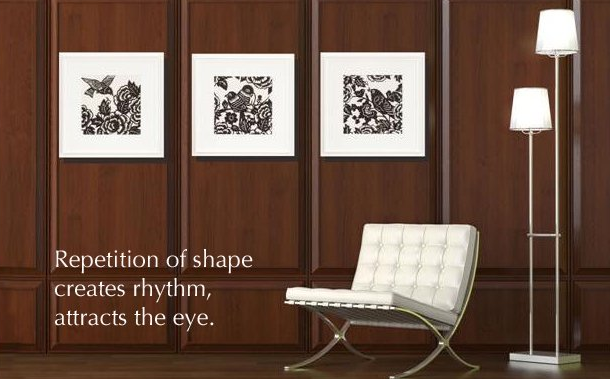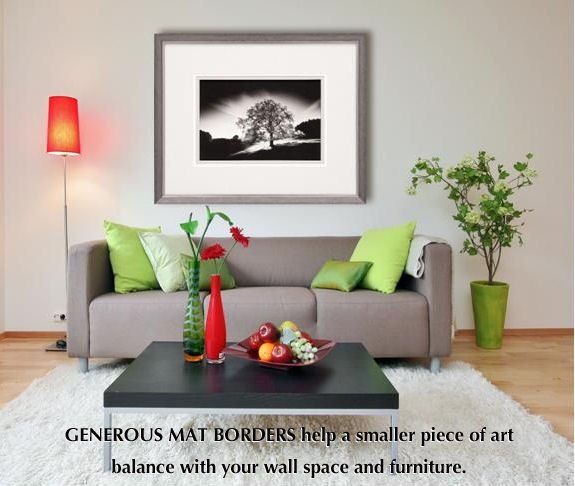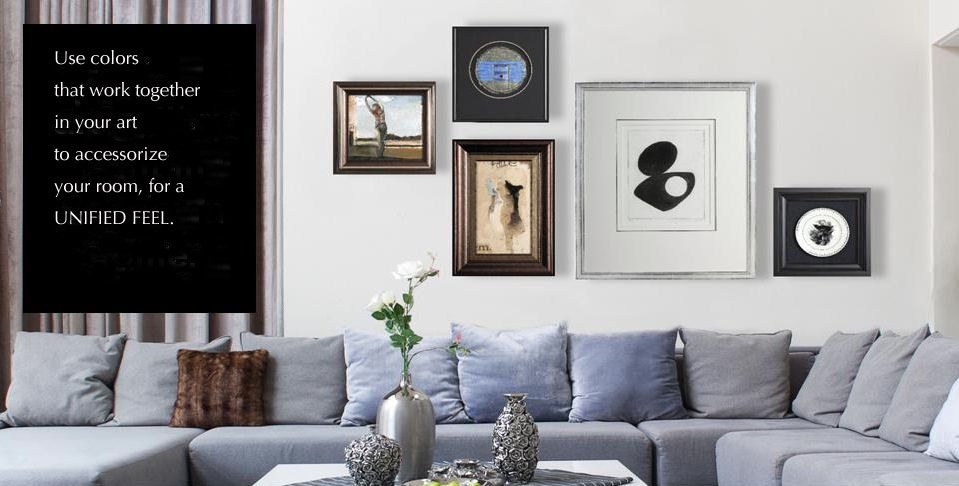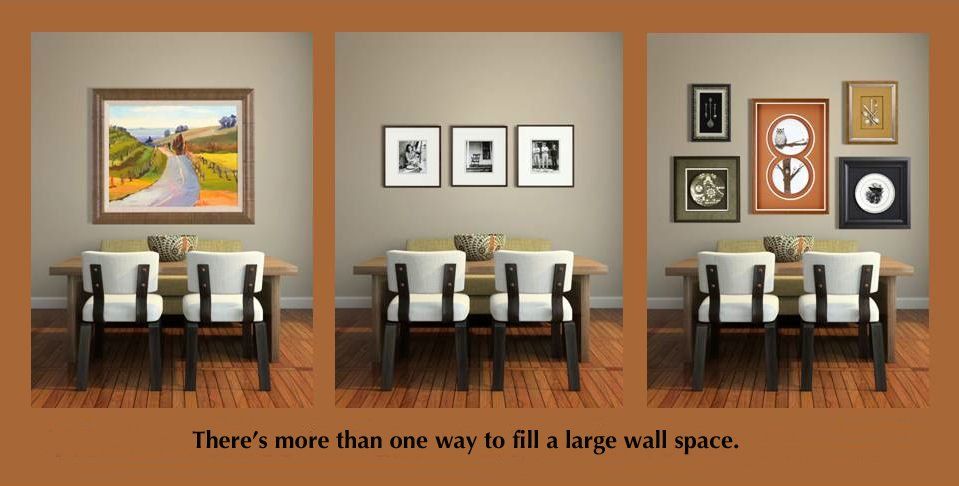Note: Hours may vary based on appointments
Tuesday - Friday 10 am to 6 pm
Saturday 10 am to 4 pm
513-791-1911
Picture Hanging Tips
Picture Hanging Tips
Beautifully framed and properly hung, artwork will provide a calm backdrop or a dramatic focal point that can transform the feeling of a room. There are many factors to consider when determining where and how to hang your art. The ultimate goal is to maximize your enjoyment of the art while protecting the art itself.
Keep in mind that bold, brightly colored, and/or large pieces will "read" well from a distance. A living room, great room, or family room would be a good place to display them. Such works, when seen through a doorway or at the end of a hallway or passage, can draw the viewer into the next space. Artwork which is subtle, small, or contains fine details is best appreciated in an intimate setting where the viewer will be "up close and personal"--- in a bedroom, study or near a desk or dressing-table, perhaps.
Subject matter can also help determine where to hang art. A still-life or floral image can be stimulating to the appetite and will work well in a dining room or eat-in kitchen. Sports memorabilia or animation art would be an exciting addition to a family room or entertainment center. Personal documents or family photos provide inspiration in rooms where a reflective mood is desired. A framed photograph or souvenir from a memorable vacation provides a welcome break from a work session when hung above a desk.
Hang artwork at a comfortable eye level for the "average" person in a room. This level will be slightly lower in a room where more time is spent seated than standing. People often hang their pictures a bit too high for comfortable viewing. This may be a throwback to the days when pictures were hung from high picture rails.
Lighting is an important consideration. No artwork of any kind should ever be hung where direct sunlight will fall on it. The high energy of sunlight will fade the art and weaken its paper or other supports. Fluorescent light also contains a large amount of the most damaging frequencies of light. Fortunately, there are new glazing products which filter 99% of the most harmful part of the spectrum, helping to protect against such exposure.
Glare or reflection from glass may be of concern. Ultimately, reflection from the surface of artwork may best be controlled by placement of the art relative to the light source and the viewer. Ceiling-mounted spotlights are very effective, because their reflections bounce down to floor level. Similarly, table or floor mounted up-lights can provide a dramatic effect while reducing glare. Sometimes it is difficult to avoid reflections of lamps, windows, or other light sources that are near the viewing level of the art. These can be controlled by "non-glare" or optically coated glass which is designed to break up reflectivity. Today's non-glare glass is much clearer than that available in years past. Anti-reflection glass is designed to be virtually invisible in most situations, even when used with multiple mats or deep frames.
In addition to controlling light exposure, it is also important to avoid hanging art where it would be exposed to extremes of heat/cold or humidity.
While there are no hard and fast rules for hanging pictures in groupings, the overall goal should be to create a balanced effect. Frame styles should be compatible, although they certainly do not have to match. (An exception might be a collection of prints all framed alike for a unified look.) Pictures should be spaced not too far from, nor too close to, one another. Ideally, a bit of visual "tension" between individual pieces will seem to hold the group together. Groupings may be symmetrical or asymmetrical, static or dynamic, depending upon the effect desired. It may be helpful to arrange your pictures on an open area of floor, and then "transfer" the arrangement to the wall.
Always use proper hanging hardware, according to the type of wall and the weight of the picture. For plaster or drywall, quality picture hooks are often fine. For certain kinds of walls, or for heavy pieces, it may be necessary to drill and insert screw anchors or other fasteners. Today there are many new and innovative fasteners and special hardware for safe and effective hanging of pictures, shelves, and objects. Security hanging hardware is also available for public spaces, or for theft deterrence.
We recommend against using hangers that depend on adhesive attachment (including "Command" hooks) for hanging art and frames. Mechanical attachment is safer and more secure.
We will be glad to provide advice to assist you in hanging your art.
Note: hours may vary based on appointments
Tuesday - Friday 10 am - 6 pmSaturday 10 am to 4 pm
9654 Kenwood Rd.
Blue Ash Ohio 45242 ~ Map
Social Media
Copyright 2024. All Rights Reserved.
Copyright 2024. All Rights Reserved.




